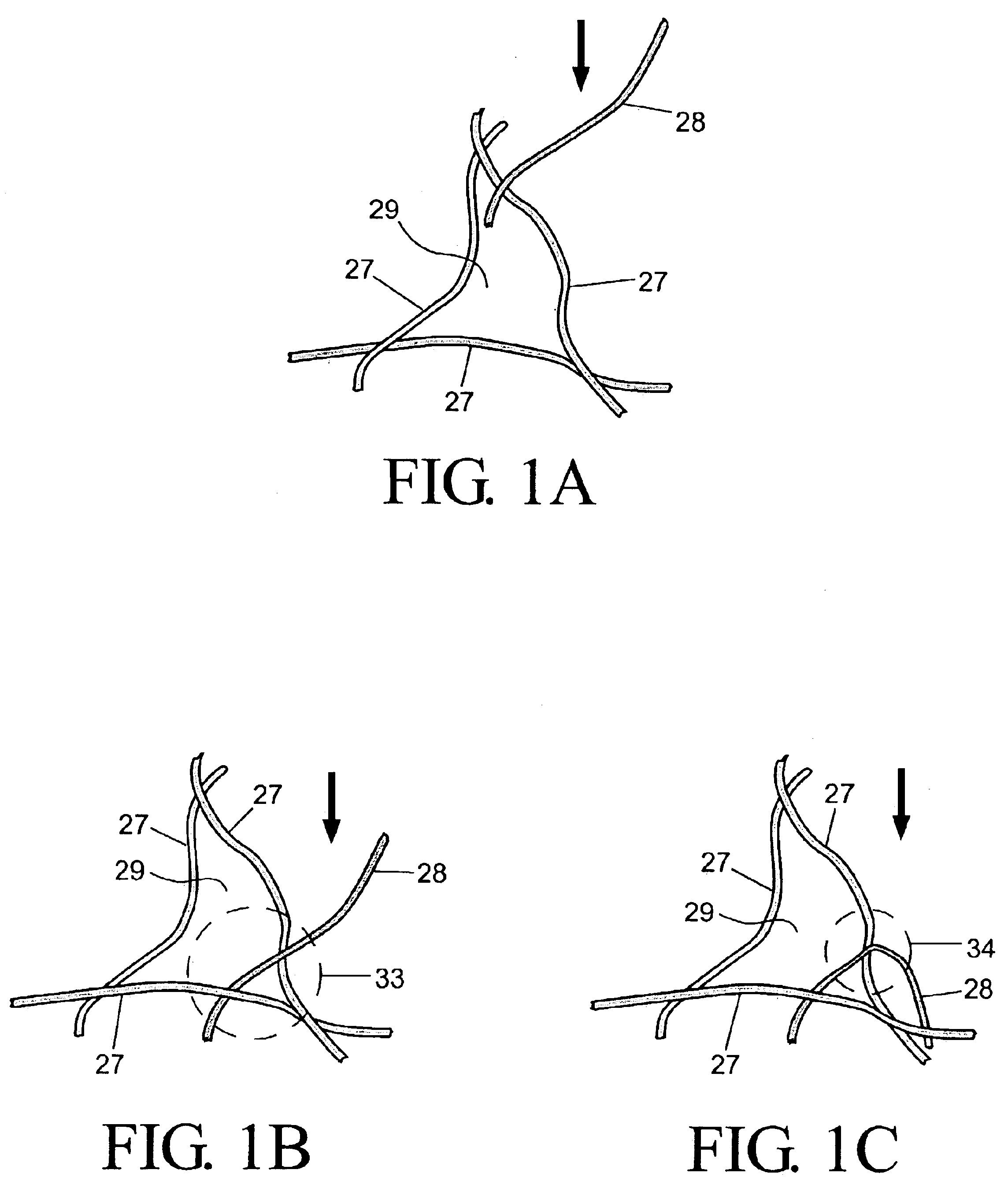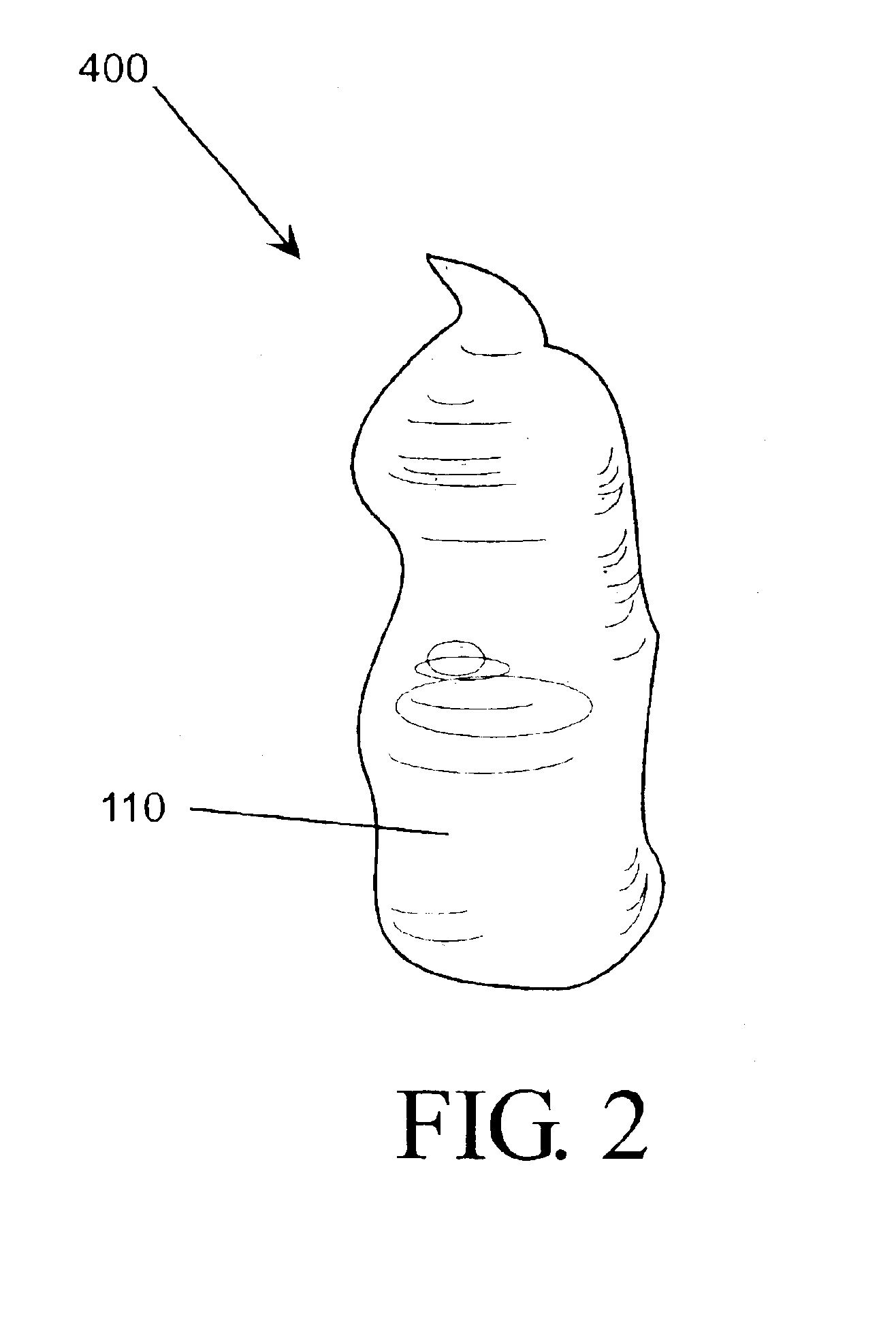High density fibrous polymers suitable for implant
a high-density, fibrous polymer technology, applied in the field of medical devices and procedures, can solve the problem that the material will not readily slump under its own weight, and achieve the effect of being easily moldabl
- Summary
- Abstract
- Description
- Claims
- Application Information
AI Technical Summary
Benefits of technology
Problems solved by technology
Method used
Image
Examples
example 1
[0071]Fibrous Collagen, 4% solids in water by weight, pH 5.3-5.9, was placed mixed with powdered (6 micrometers) β-tricalcium phosphate until a homogeneous mixture was achieved. This dispersion was centrifuged at 3200×g for 2 minutes to reduce the mixture 40% by / volume. The supernatant was poured off and discarded. The “pellet” was removed from the centrifuge tube, placed in a mold, and freeze-dried. This same processed was followed with a larger particle size (500-1000 micrometers) β-tricalcium phosphate. When centrifuged under the same conditions the resulting dispersion was reduced 60% by volume.
example 2
[0072]Fibrous Collagen, 4% solids in water by weight, pH 5.3-5.9, was placed in a centrifuge tube. The dispersion was centrifuged at 8000×g for 24 hours. The supernatant was poured off. The solution was reduced by ˜90% volume loss. This dough-like mass was then shaped into a mold and freeze-dried. The resultant sponge was then cross-linked using a thermal dehydration to lock in the molded shape. Upon rehydration, the resultant sponge held its shape and showed high resistant to compression. It was also noted that the sponge contained some elastic properties.
example 3
[0073]Fibrous Collagen, 4% solids in water by weight, pH 5.3-5.9, was placed in a centrifuge tube. The dispersion was centrifuged at 8000×g for 4-5 hours. The supernatant was poured off. The solution was reduced by ˜80% volume loss. This dough-like mass was then rolled flat using a rolling pin or a two roller system to create a high fiber density sheet. The sheet was freeze-dried and cross-linked using a 100 mM EDC solution (pH 5.4) in water. The sheet was allowed to soak in the cross-linking solution overnight and then serially rinsed 3× for 2 hours with agitation in water. This sheet exhibited high resistance to tearing and ripping.
[0074]
TABLE 1Examples of Biodegradable Polymers forConstruction of the DeviceAliphatic polyestersBioglassCelluloseChitinCollagenCopolymers of glycolideCopolymers of lactideElastinFibrinGlycolide / l-lactide copolymers (PGA / PLLA)Glycolide / trimethylene carbonate copolymers (PGA / TMC)HydrogelLactide / tetramethylglycolide copolymersLactide / trimethylene carbonat...
PUM
| Property | Measurement | Unit |
|---|---|---|
| Percent by mass | aaaaa | aaaaa |
| Percent by mass | aaaaa | aaaaa |
| Weight | aaaaa | aaaaa |
Abstract
Description
Claims
Application Information
 Login to View More
Login to View More - R&D
- Intellectual Property
- Life Sciences
- Materials
- Tech Scout
- Unparalleled Data Quality
- Higher Quality Content
- 60% Fewer Hallucinations
Browse by: Latest US Patents, China's latest patents, Technical Efficacy Thesaurus, Application Domain, Technology Topic, Popular Technical Reports.
© 2025 PatSnap. All rights reserved.Legal|Privacy policy|Modern Slavery Act Transparency Statement|Sitemap|About US| Contact US: help@patsnap.com



